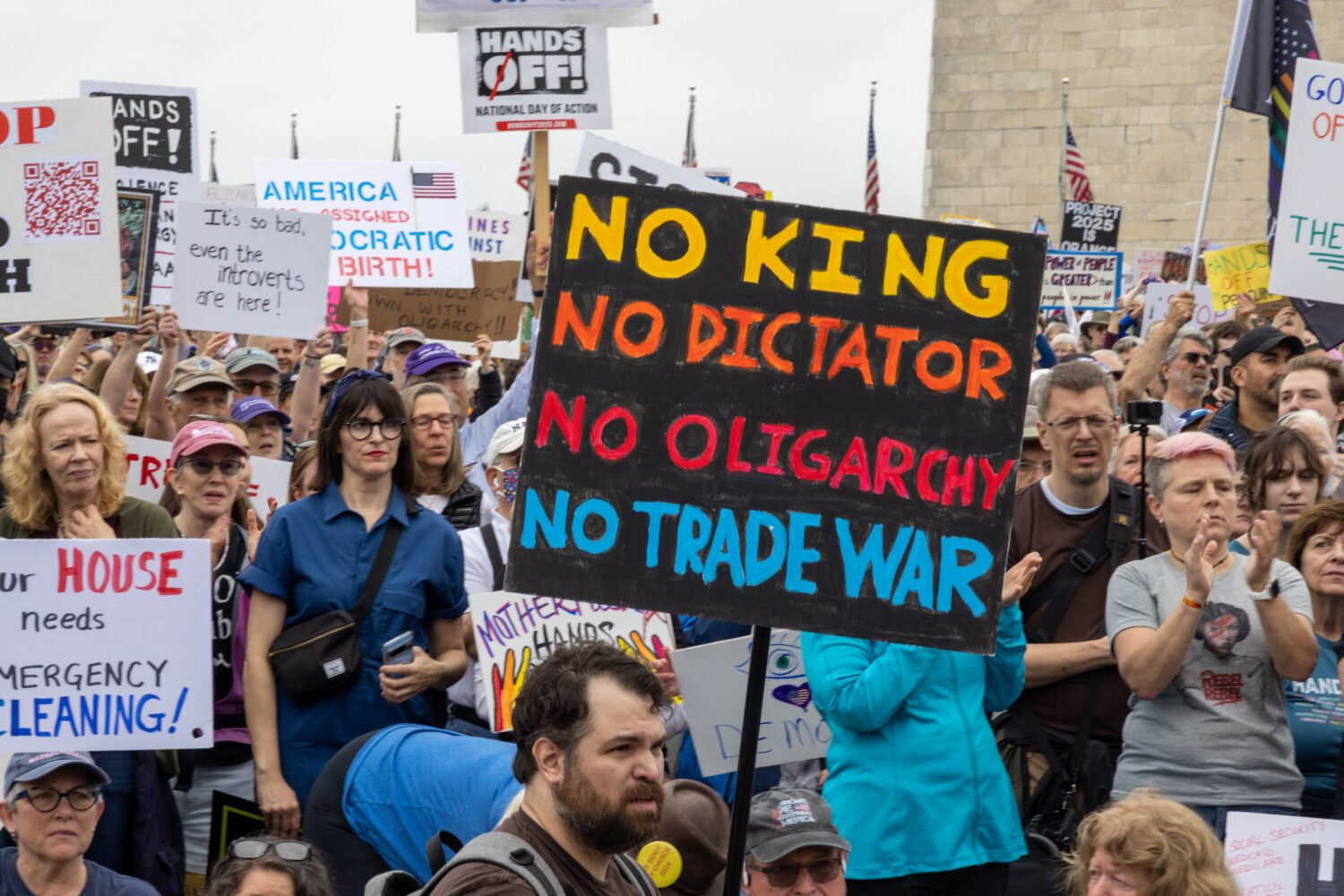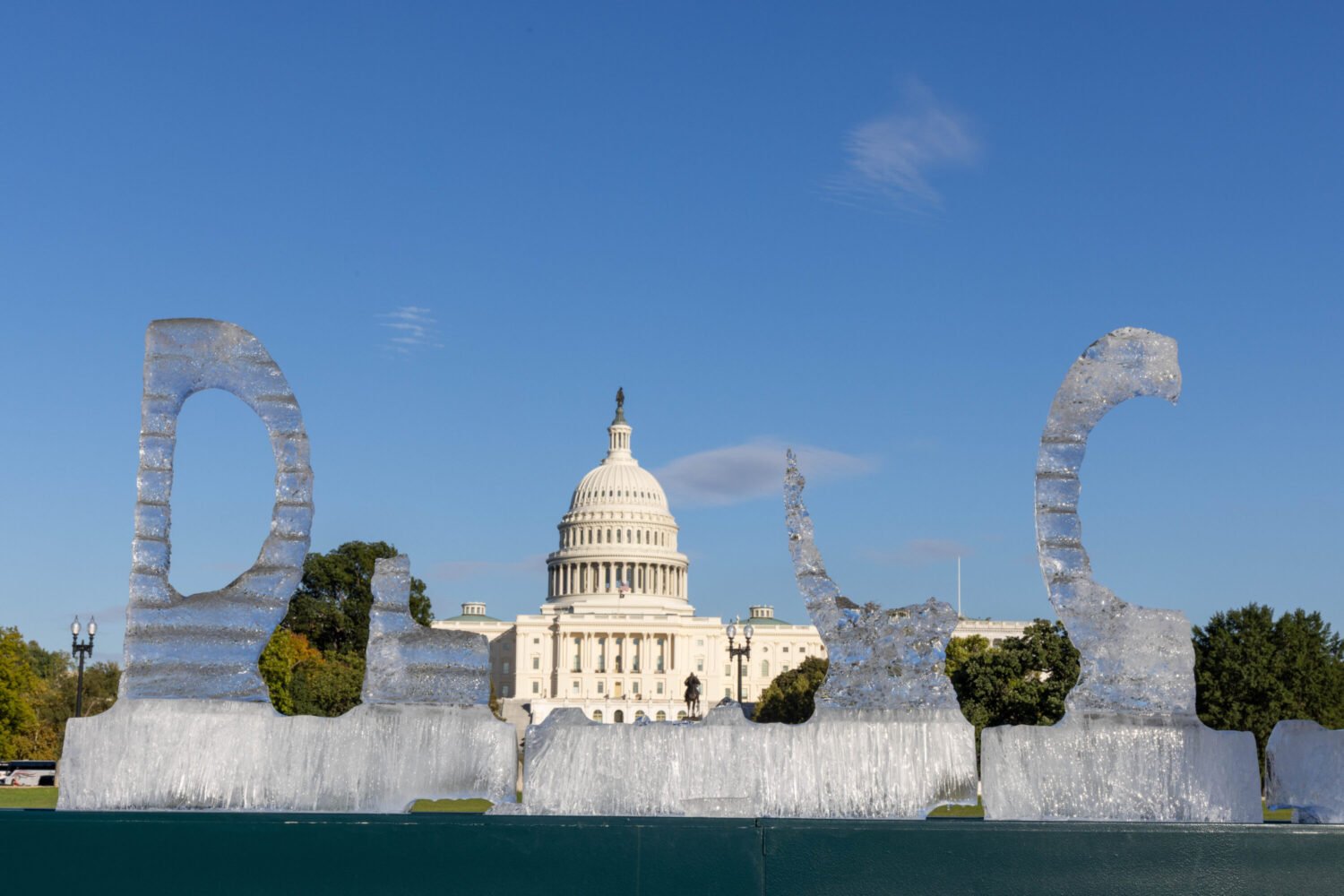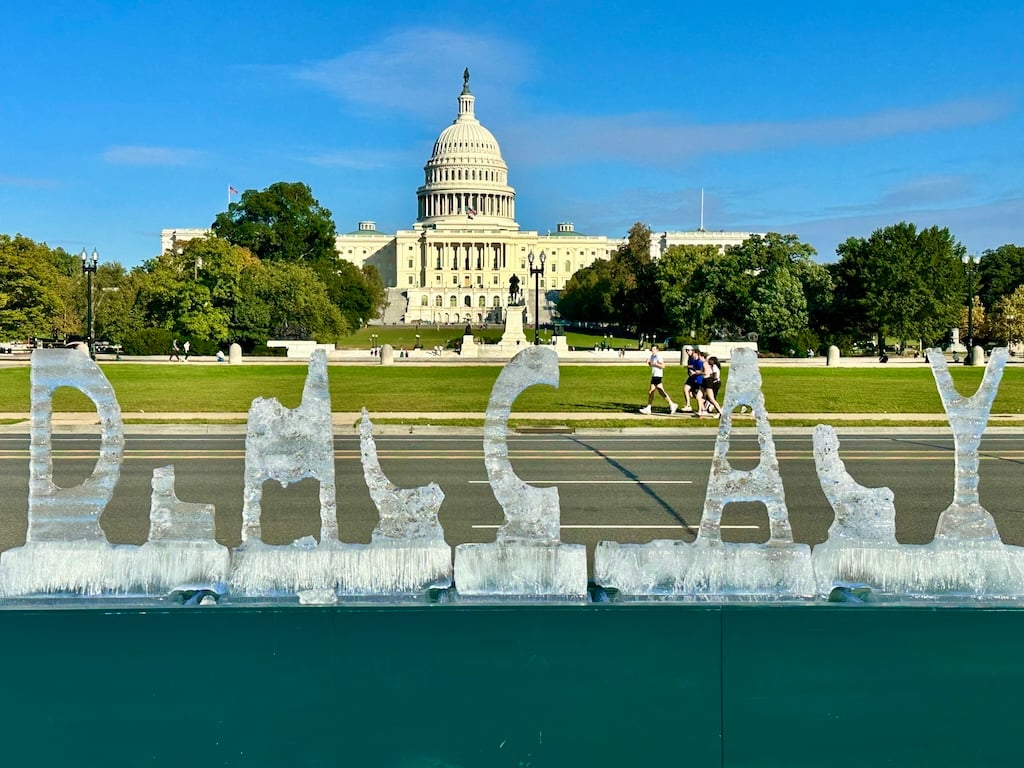On a fall night in October 1965, more than 200 people in tuxedos and evening gowns gathered to sip Champagne and toast the foreign invasion of Washington's real-estate market.
A few years earlier, Societa Generale Immobiliare, an Italian real-estate company, had planted its flag in America with the purchase of ten acres in DC's Foggy Bottom–one of the first big foreign investments in US real estate. The site along the Potomac River had been home to a Washington Gas Light plant. About the only thing to recommend the neighborhood was a small restaurant, the Water Gate Inn, that made great popovers.
SGI built grand apartment complexes in Europe and set out to do the same here. The result was to be DC's first mixed-use development, with offices, stores, a hotel, and hundreds of apartments.
Partly owned by the Vatican, SGI hired architect Luigi Moretti, a favorite of Mussolini's who was jailed briefly during World War II. Washington's many public buildings, Moretti said, were too conformist, too massive. He designed a set of curvilinear buildings made from reinforced concrete. This "living shape," he said, would serve as a bridge between the monuments of the Mall and the area along the riverfront.
Devotees of Washington's neoclassical architecture declared the design blasphemous. Washington Post critic Wolf Von Eckardt wrote that it was as appropriate as "a strip dancer performing at your grandmother's funeral."
Others cheered. At last, they said, a contemporary design. Perhaps now Washington would shed some of its provincialism and try to join Paris, London, and Rome in the ranks of great international capitals.
The party on that October evening 40 years ago marked the opening of the Watergate's first building, the boomerang-shaped Watergate East at the intersection of Virginia and New Hampshire avenues. City officials, dignitaries, and society types arrived eager for a glimpse of Georgetown's new rival for the title of Washington's bestaddress.
SGI promoters claimed that the Watergate name would be synonymous with luxury, like New York's Park Avenue and San Francisco's Nob Hill. A sales director described its penthouse apartments as "secluded waterfront estates."
Since June, SGI had been offering tours of a model apartment for 50 cents, with proceeds donated to charity. In the oval foyer, visitors stood on a marble floor beneath a ceiling painted like a sky, with white clouds streaming across a blue palette. The dining room glittered with hand-painted Oriental mural wallpaper and a Louis XVI chandelier. From the balcony, they gazed out on the Potomac and the woods ofVirginia.
Before the party, Giuseppe Cecchi, SGI's project manager for the Watergate, worried over the details of creating an elegant atmosphere in what was still a construction site. Blue carpet had been laid in a not-yet-finished grocery store. Avignon Frères, the Adams Morgan caterer that had dazzled Kennedy inauguration guests, had been hired to supply delicacies.
Within a few years, Cecchi would become one of the area's top real-estate developers. But the Watergate was his first job as boss of day-to-day operations. It was a big move for the 35-year-old Milan native. SGI planned to spend $70 million–nearly half a billion in today's dollars–to create two office buildings, a hotel, and three apartment buildings–Watergate East, West, and South.
The company had sent Cecchi to the United States in 1960 to scout locations for its first investment in North America. Local investors had shown little interest in the Washington Gas parcel, but company officials couldn't resist the riverfront. SGI's top brass flew to Washington with a $10-million check.
Planning dragged on for four years before the firm could break ground. The local architects struggled to turn the vision of Moretti–"the Frank Lloyd Wright of Italy," according to Cecchi–into construction plans.
DC officials favored the project. Concerned by the flight of residents–particularly upscale families–to the suburbs, they had approved new zoning for high-rise apartment buildings and mixed-use projects.
Two federal agencies that watched over development near DC's federal lands were not so easily swayed. The US Commission of Fine Arts warned Moretti that his design had to be compatible with a neighboring project just to the south–the National Cultural Center, or what would later be called the Kennedy Center.
Architect Edward Durrell Stone's initial plans for the cultural center called not for a rectangular building but for graceful curves. Moretti echoed those curves in his design, only to see Stone change his vision when costs proved too high.
Later the Fine Arts Commission and the National Capital Planning Commission objected to the Watergate's size, saying its planned 14-story buildings would dwarf the cultural center and the Lincoln Memorial. It would be "an overpowering mass of buildings," the commission's chairman wrote in 1963.
After much negotiation, a compromise was forged. SGI agreed to limit the height of most of the project to 112 feet, with 25 percent rising to 130 feet.
Residents began moving into Watergate East a few days after the October party. Prices for the 238 units ranged from $17,600 for efficiencies to more than $200,000 for penthouses. Buyers were doctors, lawyers, diplomats, judges, officials from the nearby World Bank and State Department, business executives, and political heavyweights. A few years later, SGI officials would say that residents were typically 50 years or older, with one child in college and another grown and married.
Life, Newsweek, and other magazines certified Washington's new elegance with splashy coverage. The New York Times photographed the wife of a telephone-company executive in their penthouse, her miniature poodle in her lap as she sat before a Louis XV fireplace salvaged from a home wrecked in Paris. The couple moved to the Watergate after tiring of maintaining three homes, she told the Times.
Though SGI designed the complex as a "city within a city," with a grocery store, salon, post office, and other conveniences, it had the feel of a country club. Seven of the ten acres were set aside for open space and turned over to Russian-born Boris Timchenko, a landscape designer who counted Jackie Kennedy among his clients. He used hedges, flowering trees, and swaths of grass to create eye-catching sights for residents strolling the grounds as well as those looking down from terraces.
Watergate East's elliptical pool became the place to see celebrities and be seen. "Everybody went down to the pool–and everybody dressed up for the pool," says Rhonda Crane, a teenager when her parents moved to Watergate East in 1966. Waiters carried Champagne, drinks, and meals poolside. On warm summer nights, a Hollywood director set up a screen and projector to show films with stars like Rock Hudson and Paula Prentiss.
The Watergate Hotel opened in 1967 with a health club, indoor pool, sauna, gym, solarium, and masseurs. Hotel manager Olah-de-Garab had run five-star European hotels and was known to Hollywood stars like Clark Gable and Greta Garbo. His staff, he bragged, spoke 23 languages.
In October 1972, with the Watergate's six buildings complete, SGI opened Les Champs, a collection of 30 boutiques that traded in luxury and international flair–Gucci, Yves St. Laurent, and smaller shops selling Scandinavian gifts, Italian shoes, and imports from Uruguay and India.
"Each store had to sell something unusual," says Henry Winston, who managed Les Champs. "That was our requirement when we were screening."
One of the first people to buy a Watergate apartment was Anna Chennault, widow of General Claire Chennault, a World War II hero who led the Flying Tigers squadron of American volunteer pilots that flew for China against Japan before the United States entered the war. A Republican fundraiser and Taiwan loyalist, Anna Chennault worked on Richard Nixon's 1968 campaign and invited many of his top aides to join her at the Watergate.
Maurice Stans, Nixon's secretary of Commerce, bought a $130,000 unit, which his wife decorated with tiger skins, elephant tusks, and other souvenirs from African safaris. John Mitchell, Nixon's attorney general, bought a three-bedroom duplex for $325,000–thought to be the most paid by a Nixon aide. Wife Martha complained about giving up her 20-room house in Rye, New York, but opened her new Watergate home to magazine photographers and threw lavish parties there, including a bridal shower for Tricia Nixon.
Other GOP insiders at the Watergate included Bob Dole, then head of the Republican National Committee, Transportation secretary John Volpe, and Nixon speechwriter Victor Lasky.
Chennault came to know Nixon's friends well. "Martha Mitchell used to come up to my apartment to complain about her husband," she says. Chennault regularly entertained Republican leaders and foreign dignitaries in her Watergate East penthouse. These were formal affairs. She served as many as 50 guests on the first floor of her duplex, with candlelight reflecting off Asian artwork and treasures. Afterward, the party moved upstairs, where her longtime friend attorney Thomas "Tommy the Cork" Corcoran played the piano. "People would sing and dance," she says. "It was lots of fun."
Such high living brought notoriety to the Watergate, which some called the "Republican Bastille." In 1970, after the Chicago Seven trial, student radicals tried to storm Watergate East for a "people's tour." Police were summoned, turned back the protesters, then stood guard the next day, munching cookies and drinking coffee.
The nixon crowd's reign atop Washington's "A" list ended with the scandal wrought in the complex where many of them lived. On June 16, 1972, four men rented two rooms at the Watergate Hotel and dined on lobster in the hotel restaurant. That night, joined by another man, they broke into the Democratic National Committee headquarters on the sixth floor of the Watergate office building adjacent to the hotel. Nixon resigned two years later.
Coincidentally, resident Rose Mary Woods, Nixon's secretary, was the victim of one of the Watergate's first burglaries. In March 1969, jewelry worth thousands of dollars was stolen from her apartment.
The link to the Nixon scandal proved a curse and a blessing for Watergate residents. Cecchi says that he couldn't rent the DNC offices for nearly two years after. Guests at the hotel stole hundreds of thousands of dollars' worth of towels, robes, and other items emblazoned with the Watergate logo as souvenirs.
Before John Mitchell's conviction for his role in the break-in, he and wife Martha sold their apartment to Senator Russell Long, whose wife, Carolyn, coveted the Mitchells' duplex and its views of the Potomac and the monuments.
Notoriety raised the Watergate's profile, bringing increased foot traffic to its stores and fresh interest in its luxurious lifestyle. The liquor store there had bottles with the Watergate label, which were big sellers in the 1970s and '80s. "Every real-estate development needs to keep its name in front of people," says Henry Winston, who now runs a real-estate firm with his wife, Tina, and daughter Gigi that specializes in Watergate apartments. "And that did it."
The Watergate enjoyed a second run as "White House West" early in Ronald Reagan's administration. It became headquarters for "The Group," a collection of California businessmen and insiders who were confidants of the Reagans.
Soon after the 1981 inauguration, Lee Annenberg, Reagan's State Department chief of protocol, and publishing mogul Walter Annenberg moved into one of the hotel's three-bedroom suites, which the hotel redecorated to suit her taste. Charles Wick, a Reagan fundraiser and head of the US Information Agency, hosted the Reagans at Christmas Eve dinners in his rented apartment. Department-store heir Alfred Bloomingdale took an apartment, where Nancy Reagan stopped by frequently to chat with his wife, Betsy, her longtime friend.
These high rollers swapped gossip in the salon, threw parties for one another, and flashed their credit cards in Les Champs stores. Several nights a week they held court at Jean-Louis, the restaurant in the hotel opened by Michelin two-star chef Jean-Louis Palladin in 1979.
"It's a rejuvenation of the grand lifestyle," a Gucci store manager told the Washington Post. "They are ultra ultramillionaires."
Most of the Group left Washington before the end of Reagan's first term, and as Washington grew, the Watergate became just another residential and office complex.
At 40, it's showing its age. Some apartments sport their original decor, with Age of Aquarius parquet floors and metal kitchen cabinets. Units that haven't been reconfigured feature galley kitchens that are tiny compared to the showplaces found in luxury condos today.
Jean-Louis Palladin closed his blue-ribbon restaurant in the mid-1990s and went to New York. Various owners have struggled to make the hotel profitable; last year Monument Realty bought it with plans to remake it into a luxury condo building. Monument's marketing slogan: Take Your Place in History.
The Watergate retains luster, though. One-bedroom apartments sell for $400,000 and up, and penthouses can go for more than $3 million. Some renovated units feature the open floor plans and urban look popular in new downtown condos and lofts.
Views of the riverfront and monuments cannot be matched. "People always ask to come by and see the fireworks," says Chennault.
VIPs still roam the halls. Bob and Elizabeth Dole remain the king and queen of the Watergate, but Condoleezza Rice's star burns brightest. When she appeared in a 2001 Vogue, photographed by Annie Leibovitz in her apartment wearing a black, strapless gown and leaning on her Steinway grand piano, the Watergate entered a new generation as a symbol of elegance.
Scandal still occasionally visits the building. Monica Lewinsky took refuge from the press in her mother's Watergate apartment next door to the Doles ("We'd say hello, and that was about it," the former senator said). When she ventured out once for a dip in the pool, workers in the office buildings rushed to the windows for a glimpse at the former White House intern in a bathing suit.
Giuseppe Cecchi, who became president of the Watergate complex, founded his own development company, IDI Group, in 1975. IDI has built condo communities such as the Rotonda at Tysons Corner and the Belvedere in Rosslyn. The company also built a skyscraper above the Rosslyn Metro station that doubles as its headquarters. From his office, Cecchi can look across the river at the curving lines of the Watergate.
Cecchi's latest project echoes his first. IDI is negotiating to build three 15-story condo buildings at the mouth of the Occoquan River, near Woodbridge, with an indoor pool, health spa, and gorgeous views of the river and a marina. It's to be called Rivergate.
Home Of The VIPS
Many notables live or have lived at the Watergate or have been regular guests of the Watergate Hotel. Here is a partial list.
Congress: Howard Baker, Alan Cranston, Bob and Elizabeth Dole, Paula Hawkins, Jacob Javits, Russell Long, Larry Pressler, Abe Ribicoff, John Warner.
Executive branch: Alan Greenspan, Alexander Haig, Drew Lewis, John Mitchell, Paul O'Neill, Condoleezza Rice, Maurice Stans, Caspar Weinberger.
Law and lobbying: Ruth Bader Ginsburg, Jack Olender, Bob Strauss.
Business and politics: Walter Annenberg, Alfred Bloomingdale, Jack Kent Cooke, Philip Merrill, Bob Rosenthal, Clare Boothe Luce.
Entertainment and media: Leonard Bernstein, Sammy Davis Jr., Plácido Domingo, Henry Fonda, Katharine Hepburn, Luciano Pavarotti, Itzhak Perlman, Dan Rather, Mstislav Rostropovich, Lesley Stahl, MaureenStapleton, Elizabeth Taylor, Garry Trudeau, Cicely Tyson, Barbara Walters, Andy Warhol.
















